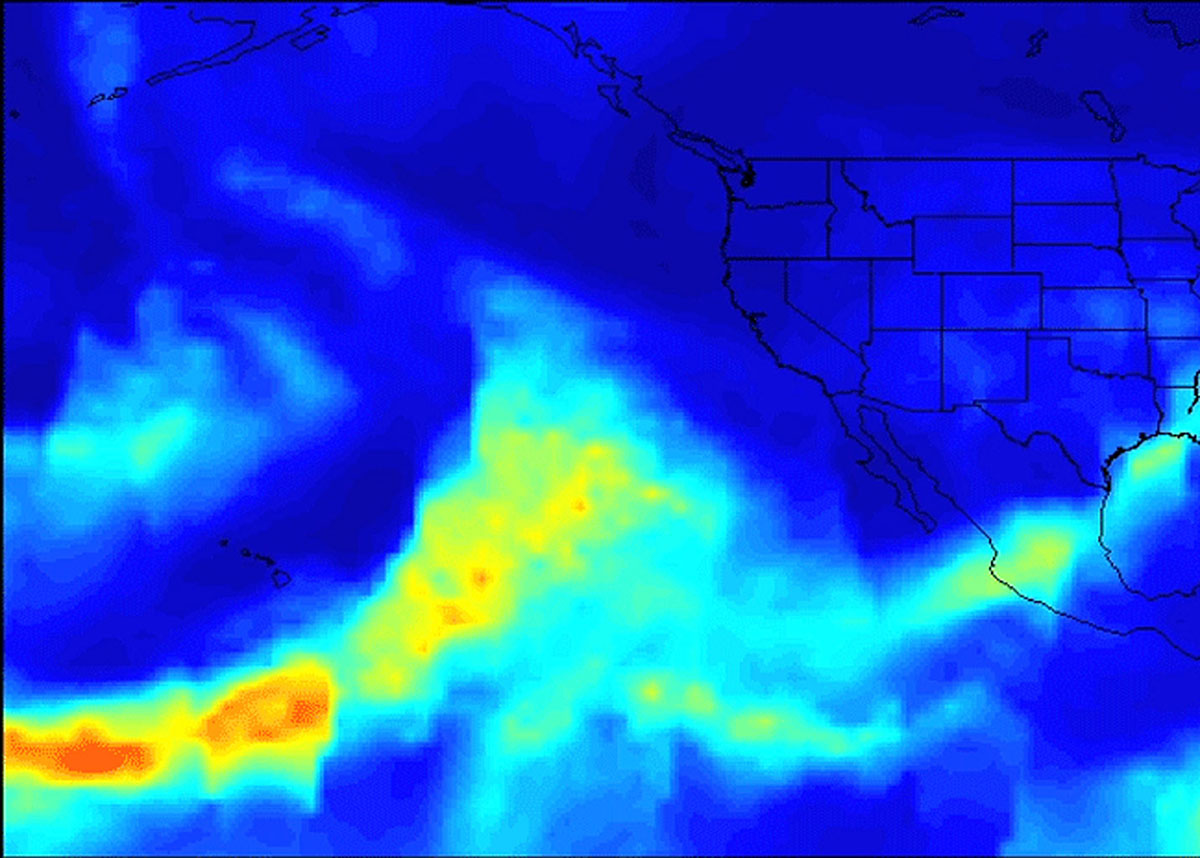Written by Alan Buis
NASA’s Jet Propulsion Laboratory
 Pasadena, CA – A series of atmospheric rivers that brought drought-relieving rains, heavy snowfall and flooding to California this week is highlighted in a new movie created with satellite data from the Atmospheric Infrared Sounder (AIRS) instrument on NASA’s Aqua satellite.
Pasadena, CA – A series of atmospheric rivers that brought drought-relieving rains, heavy snowfall and flooding to California this week is highlighted in a new movie created with satellite data from the Atmospheric Infrared Sounder (AIRS) instrument on NASA’s Aqua satellite.
The images of atmospheric water vapor were collected by AIRS between January 7th and 11th. They show the amount of moisture present in the atmosphere and its movement across the Pacific Ocean to the United States, where much of it fell as rain or snow.

Atmospheric rivers are typically 250 to 375 miles (400 to 600 kilometers) wide. The term “Pineapple Express” refers to atmospheric rivers that originate near or just east of the Hawaiian Islands and terminate along the West Coast of North America.
Other atmospheric rivers originate in the tropical Western Pacific Ocean and take on a more west-to-east orientation near the U.S. West Coast.
Several distinct plumes of moisture are apparent in the AIRS imagery. The first of three atmospheric river events occurred on January 7th and 8th. This was a classic Pineapple Express, featuring an uninterrupted supply of heavy moisture drawn up from the deep tropics.
This was the wettest storm of the series, producing very heavy rainfall, more than 1 foot (0.3 meter), in parts of Central and Northern California, with relatively smaller amounts of snow at the highest elevations of the Sierra Nevada.
[youtube]https://www.youtube.com/watch?v=y1XmLl_Uxt4[/youtube]
The second blob of heavy moisture, from January 8th to 10th to the west of California, likely originated thousands of miles to the west, in the tropical Western Pacific. This atmospheric river did not maintain its tropical connection. However, it still produced prodigious rainfall totals in Northern California and much more snow than the first event, since the storm had a more northern and colder trajectory.
A third storm, the coldest of the three events, moved through California on January 11th and 12th, producing significant rainfall, as well as snow at higher elevations.
The movie ends with another atmospheric river attempting to form on January 11th and 12th to the west of Hawaii, transporting moisture into the storm track.
The animation can be viewed at: http://photojournal.jpl.nasa.gov/catalog/PIA21209
With more than 2,000 channels sensing different regions of the atmosphere, the system creates a global, three-dimensional map of atmospheric temperature and humidity, cloud amounts and heights, greenhouse gas concentrations, and many other atmospheric phenomena.
Aqua was launched into Earth orbit in 2002. AIRS and AMSU are managed by NASA’s Jet Propulsion Laboratory in Pasadena, California, under contract to NASA. JPL is a division of Caltech in Pasadena.
More information about AIRS can be found at: airs.jpl.nasa.gov
NASA collects data from space, air, land and sea to increase our understanding of our home planet, improve lives and safeguard our future. NASA develops new ways to observe and study Earth’s interconnected natural systems with long-term data records. The agency freely shares this unique knowledge and works with institutions around the world to gain new insights into how our planet is changing.



